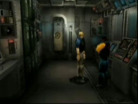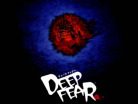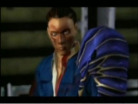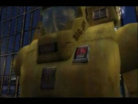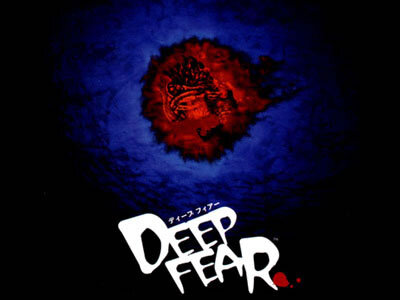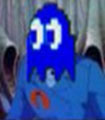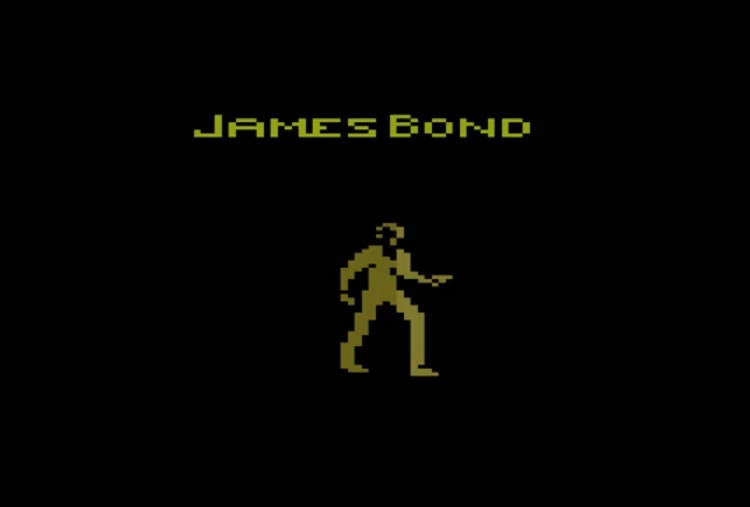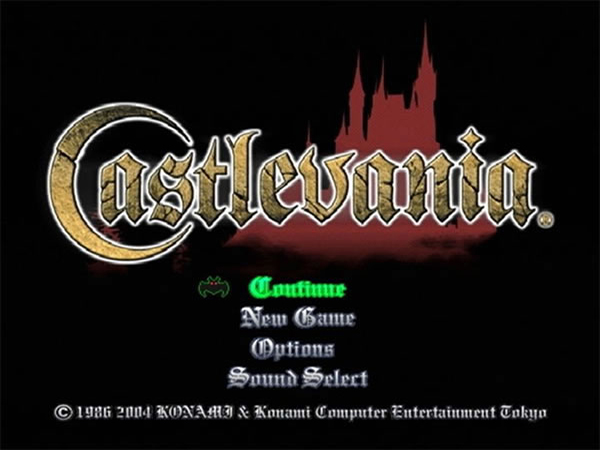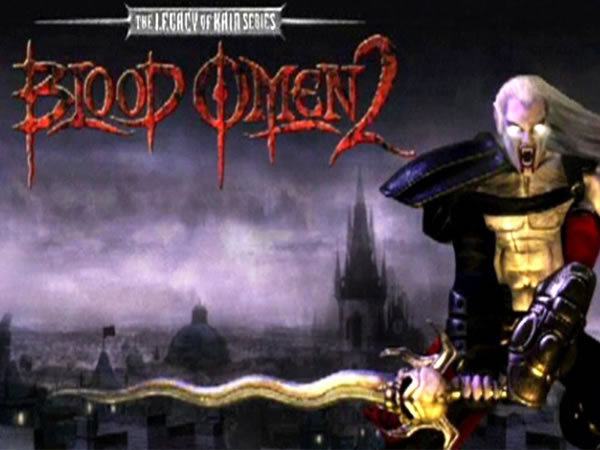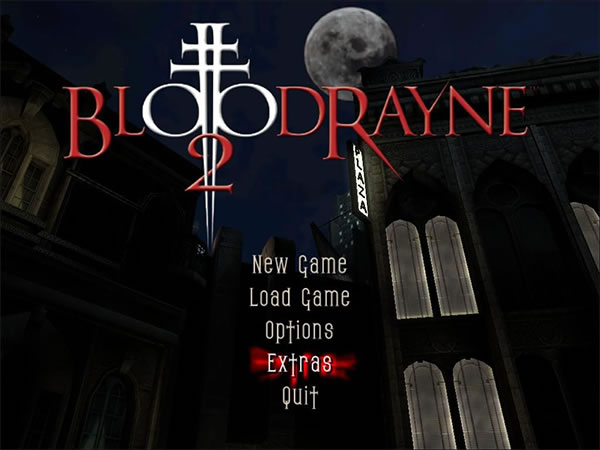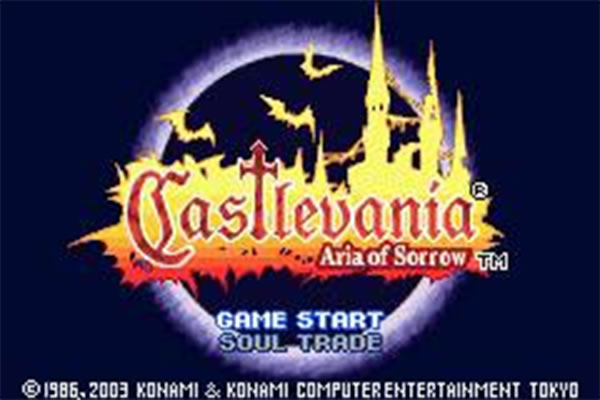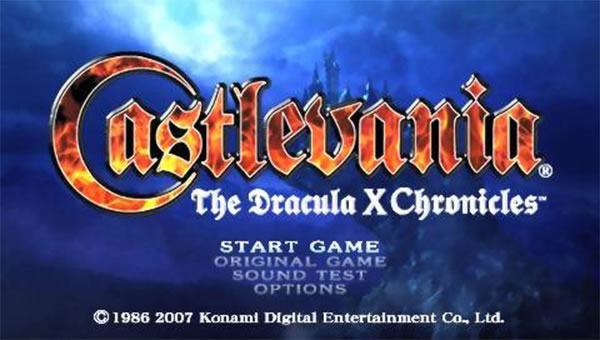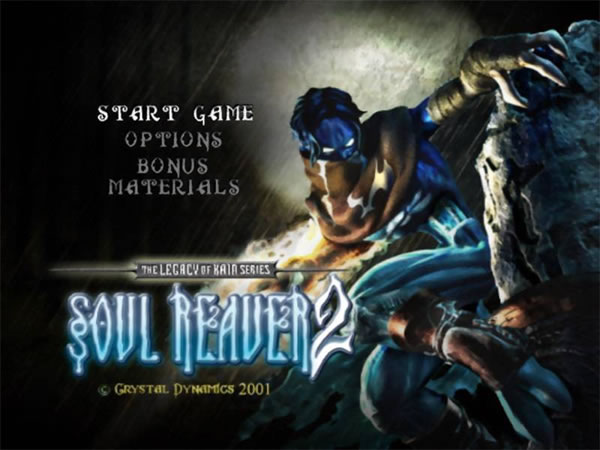- CLASSIC MAGAZINES
- REVIEW CREW
A show recapping what critics thought back
when classic games first came out! - NEXT GENERATION'S BEST & WORST
From the worst 1-star reviews to the best
5-stars can offer, this is Next Generation! - NINTENDO POWER (ARCHIVE)
Experience a variety of shows looking at the
often baffling history of Nintendo Power! - MAGAZINE RETROSPECTIVE
We're looking at the absolutely true history of
some of the most iconic game magazines ever! - SUPER PLAY'S TOP 600
The longest and most ambitious Super NES
countdown on the internet! - THEY SAID WHAT?
Debunking predictions and gossip found
in classic video game magazines! - NEXT GENERATION UNCOVERED
Cyril is back in this spin-off series, featuring the
cover critic review the art of Next Generation! - HARDCORE GAMER MAGAZING (PDF ISSUES)
Download all 36 issues of Hardcore Gamer
Magazine and relive the fun in PDF form!
- REVIEW CREW
- ELECTRONIC GAMING MONTHLY
- ELECTRONIC GAMING MONTHLY RANKS
From Mario to Sonic to Street Fighter, EGM
ranks classic game franchises and consoles! - ELECTRONIC GAMING MONTHLY BEST & WORST
Counting down EGM’s best and worst reviews
going year by year, from 1989 – 2009! - ELECTRONIC GAMING BEST & WORST AWARDS
11-part video series chronicling the ups and
downs of EGM’s Best & Worst Awards!
- ELECTRONIC GAMING MONTHLY RANKS
- GAME HISTORY
- GAME OVER: STORY BREAKDOWNS
Long-running series breaking down game
stories and analyzing their endings! - A BRIEF HISTORY OF GAMING w/ [NAME HERE]
Real history presented in a fun and pithy
format from a variety of game historians! - THE BLACK SHEEP
A series looking back at the black sheep
entries in popular game franchises! - INSTANT EXPERT
Everything you could possibly want to know
about a wide variety of gaming topics! - FREEZE FRAME
When something familiar happens in the games
industry, we're there to take a picture! - I'VE GOT YOUR NUMBER
Learn real video game history through a series
of number-themed episodes, starting at zero! - GREAT MOMENTS IN BAD ACTING
A joyous celebration of some of gaming's
absolute worst voice acting!
- GAME OVER: STORY BREAKDOWNS
- POPULAR SHOWS
- DG NEWS w/ LORNE RISELEY
Newsman Lorne Riseley hosts a regular
series looking at the hottest gaming news! - REVIEW REWIND
Cyril replays a game he reviewed 10+ years
ago to see if he got it right or wrong! - ON-RUNNING FEUDS
Defunct Games' longest-running show, with
editorials, observations and other fun oddities! - DEFUNCT GAMES QUIZ (ARCHIVE)
From online quizzes to game shows, we're
putting your video game knowledge to the test!- QUIZ: ONLINE PASS
Take a weekly quiz to see how well you know
the news and current gaming events! - QUIZ: KNOW THE GAME
One-on-one quiz show where contestants
find out if they actually know classic games! - QUIZ: THE LEADERBOARD
Can you guess the game based on the classic
review? Find out with The Leaderboard!
- QUIZ: ONLINE PASS
- DEFUNCT GAMES VS.
Cyril and the Defunct Games staff isn't afraid
to choose their favorite games and more! - CYRIL READS WORLDS OF POWER
Defunct Games recreates classic game
novelizations through the audio book format!
- DG NEWS w/ LORNE RISELEY
- COMEDY
- GAME EXPECTANCY
How long will your favorite hero live? We crunch
the numbers in this series about dying! - VIDEO GAME ADVICE
Famous game characters answer real personal
advice questions with a humorous slant! - FAKE GAMES: GUERILLA SCRAPBOOK
A long-running series about fake games and
the people who love them (covers included)! - WORST GAME EVER
A contest that attempts to create the worst
video game ever made, complete with covers! - LEVEL 1 STORIES
Literature based on the first stages of some
of your favorite classic video games! - THE COVER CRITIC
One of Defunct Games' earliest shows, Cover
Critic digs up some of the worst box art ever! - COMMERCIAL BREAK
Take a trip through some of the best and
worst video game advertisements of all time! - COMIC BOOK MODS
You've never seen comics like this before.
A curious mix of rewritten video game comics!
- GAME EXPECTANCY
- SERIES ARCHIVE
- NINTENDO SWITCH ONLINE ARCHIVE
A regularly-updated list of every Nintendo
Switch Online release, plus links to review! - PLAYSTATION PLUS CLASSIC ARCHIVE
A comprehensive list of every PlayStation
Plus classic release, including links! - RETRO-BIT PUBLISHING ARCHIVE
A regularly-updated list of every Retro-Bit
game released! - REVIEW MARATHONS w/ ADAM WALLACE
Join critic Adam Wallace as he takes us on a
classic review marathon with different themes!- DEFUNCT GAMES GOLF CLUB
Adam Wallace takes to the links to slice his way
through 72 classic golf game reviews! - 007 IN PIXELS
Adam Wallace takes on the world's greatest spy
as he reviews 15 weeks of James Bond games! - A SALUTE TO VAMPIRES
Adam Wallace is sinking his teeth into a series
covering Castlevania, BloodRayne and more! - CAPCOM'S CURSE
Adam Wallace is celebrating 13 days of Halloween
with a line-up of Capcom's scariest games! - THE FALL OF SUPERMAN
Adam Wallace is a man of steel for playing
some of the absolute worst Superman games! - THE 31 GAMES OF HALLOWEEN
Adam Wallace spends every day of October afraid
as he reviews some of the scariest games ever! - 12 WEEKS OF STAR TREK
Adam Wallace boldly goes where no critic has
gone before in this Star Trek marathon!
- DEFUNCT GAMES GOLF CLUB
- DAYS OF CHRISTMAS (ARCHIVE)
Annual holiday series with themed-episodes
that date all the way back to 2001!- 2015: 30 Ridiculous Retro Rumors
- 2014: 29 Magazines of Christmas
- 2013: 29 Questionable Power-Ups of Christmas
- 2012: 34 Theme Songs of Christmas
- 2011: 32 Game Endings of Christmas
- 2010: 31 Bonus Levels of Christmas
- 2009: 30 Genres of Christmas
- 2008: 29 Controls of Christmas
- 2007: 34 Cliches of Christmas
- 2006: 33 Consoles of Christmas
- 2005: 32 Articles of Christmas
- 2004: 31 Websites of Christmas
- 2003: 29 Issues of Christmas
- 2002: 28 Years of Christmas
- 2001: 33 Days of Christmas
- NINTENDO SWITCH ONLINE ARCHIVE
- REVIEW ARCHIVE
- FULL ARCHIVE
Deep Fear
Deep Fear was geared to be played by American audiences: the acting is all in English, one character obsesses about baseball, and your superior officer is named Clancy, a seeming homage to Tom Clancy, an American writer who often wrote about military submarines. So why wasn't it ported to the American version of the Saturn? Who knows, but we missed out on a great survival horror adventure.
You control John Mayor, a sturdy blonde-haired specimen of a man who is suffering from the common cold. As a member of ERS (Emergency Rescue Services), he must investigate strange happenings in various underwater stations and vehicles. His first assignment is to explore a lopsided submarine lying on the ocean floor. An African-American sidekick named "Mookie" wears a ball cap and likens everything to baseball (he even gives a shout-out to "the Yankees of 96" making him this reviewer's favorite character). When John and Mookie arrive at the sub, they discover a naval officer trying to euthanize himself because his body is being taken over by a quickly spreading parasite. Unfortunately, most of the other denizens of the deep have befallen the same fate, and John is forced to kill them, even if he recognizes the malformed humans as former friends. To confound his problems, oxygen is sometimes scarce, so he may have to fumble with a respirator in the midst of combat.
As strange as this may sound, the game thrives on its limitations. Modern gamers may be frustrated by the inability to toggle camera angles, but the fixed point-of-view really helps make this horror more horrifying. Sometime John will face something fierce, but we cannot see what monstrosity awaits him. You can then opt to have the young hero run into danger just to get a more revealing view or you can have him take his gun and fire into unknown. If you choose the latter, you will need to listen for the sounds of bullets hitting something organic, waiting for sputtering sounds as various humours pour from the monster's body.
Another seeming shortcoming is the lack of space and maneuverability in battles, but this snugness fits the submarine setting perfectly. The crew's living quarters appropriately resemble college dorm rooms, minimally decorated with the basic necessities of life, and in some of these John will face some of his largest adversaries. While most adventures reserve larger playing fields for major boss battles, the ones in Deep Fear feel comparatively like sardine tins. Since there's no room to run, you will need to confront your claustrophobia in addition to facing gargantuan mutants.
The sounds in this game are excellent. Water drips, air locks creak, and a monkey screams from a far off room - all offsetting the fact that most of this game is silent - a silence that emulates the feeling of being submerged and insulated from the world. It is particularly strange that most of the gameplay has no soundtrack since Sega conscripted one of Japan's most celebrated composers, Kenji Kawai, to orchestrate its sounds. Kawai is not a Foley artist, but a musician known for his exemplary work with films like Ghost in a Shell, Avalon, and Ringu. Instead of a continuous soundtrack, Kawai punctuates the actions with light touches of environmental sounds, and shows a restraint that works very well.
Many players have panned the game's story, but their criticism mostly stems from its stiff acting and the absurdity of some character's voices. Dubois Amalric, the architect of the station, for example, speaks in a high effeminate falsetto at a volume almost as loud as his purple turtleneck sweater. Strangely enough, he shows more emotion than most other characters.
The script does suffer from a misunderstanding of basic human behavior. John Mayor seems too levelheaded and unfazed by the strange events that befall him despite seeing friends and colleagues die. He only breaks his stoicism when he talks about his deceased girlfriend who died in a boating accident years prior to the game's action. This guy clearly has his priorities all wrong. Other characters seem more concerned about the welfare of their pets than their own safety. One girl wants to free her dolphins before running out of oxygen; a scientist cannot part without her lab monkey; another woman clears the halls with a shotgun in search of her bulldog. (I searched the manual just to see if the ASPCA sponsored the game in some sort of "Captain Planet lets teach the children" sort of way. No dice.)
Despite questionable characterization, the story's premise is wonderfully scripted and the writers should be commended for integrating real-world events and technology so seamlessly into their fiction. For example, the story cites "Project Daedalus" - a proposal made by British scientists in 1973 to send an unmanned probe to a neighboring solar system to determine the feasibility of long space flights. While the actual project was abandoned in 1978, the writers of Deep Fear use this bit of history as the impetus for scientists to conduct "cold sleep" experiments in space. After a space capsule conducting one such experiment lands in the ocean, we discover the strange side effect of these tests ... mutation.
Deep Fear is often likened to the first Resident Evil, but the Sega title is much easier. In Resident Evil you must carefully ration your supplies, but in Deep Fear you can help yourself to bottomless refills of first aid sprays and ammo (and oxygen). The writers must have been conscious of the similarities between the two games; there even seems to be a subtle nod to the Capcom game in one room where a potted plant sits among various first aid supplies. Resident Evil fans may find themselves trying futilely to pick it up to restore their health.
If you are sentimental about old horror adventures with limited capabilities, then Deep Fear is for you. There are still many Japanese copies available for sale at inexpensive prices, and while most of the text is in Japanese, it is largely unneeded to solve puzzles (keypads mostly) or to understand the story. In the worst-case scenario, you can consult a walkthrough.
While we have movies like the Abyss, Leviathan, and Deep Star Six, the underwater-sci-fi-horror genre is largely untapped in gaming. If a game like Deep Fear had been released on a more popular system, perhaps that would be different.
You control John Mayor, a sturdy blonde-haired specimen of a man who is suffering from the common cold. As a member of ERS (Emergency Rescue Services), he must investigate strange happenings in various underwater stations and vehicles. His first assignment is to explore a lopsided submarine lying on the ocean floor. An African-American sidekick named "Mookie" wears a ball cap and likens everything to baseball (he even gives a shout-out to "the Yankees of 96" making him this reviewer's favorite character). When John and Mookie arrive at the sub, they discover a naval officer trying to euthanize himself because his body is being taken over by a quickly spreading parasite. Unfortunately, most of the other denizens of the deep have befallen the same fate, and John is forced to kill them, even if he recognizes the malformed humans as former friends. To confound his problems, oxygen is sometimes scarce, so he may have to fumble with a respirator in the midst of combat.
As strange as this may sound, the game thrives on its limitations. Modern gamers may be frustrated by the inability to toggle camera angles, but the fixed point-of-view really helps make this horror more horrifying. Sometime John will face something fierce, but we cannot see what monstrosity awaits him. You can then opt to have the young hero run into danger just to get a more revealing view or you can have him take his gun and fire into unknown. If you choose the latter, you will need to listen for the sounds of bullets hitting something organic, waiting for sputtering sounds as various humours pour from the monster's body.
Another seeming shortcoming is the lack of space and maneuverability in battles, but this snugness fits the submarine setting perfectly. The crew's living quarters appropriately resemble college dorm rooms, minimally decorated with the basic necessities of life, and in some of these John will face some of his largest adversaries. While most adventures reserve larger playing fields for major boss battles, the ones in Deep Fear feel comparatively like sardine tins. Since there's no room to run, you will need to confront your claustrophobia in addition to facing gargantuan mutants.
The sounds in this game are excellent. Water drips, air locks creak, and a monkey screams from a far off room - all offsetting the fact that most of this game is silent - a silence that emulates the feeling of being submerged and insulated from the world. It is particularly strange that most of the gameplay has no soundtrack since Sega conscripted one of Japan's most celebrated composers, Kenji Kawai, to orchestrate its sounds. Kawai is not a Foley artist, but a musician known for his exemplary work with films like Ghost in a Shell, Avalon, and Ringu. Instead of a continuous soundtrack, Kawai punctuates the actions with light touches of environmental sounds, and shows a restraint that works very well.
Many players have panned the game's story, but their criticism mostly stems from its stiff acting and the absurdity of some character's voices. Dubois Amalric, the architect of the station, for example, speaks in a high effeminate falsetto at a volume almost as loud as his purple turtleneck sweater. Strangely enough, he shows more emotion than most other characters.
The script does suffer from a misunderstanding of basic human behavior. John Mayor seems too levelheaded and unfazed by the strange events that befall him despite seeing friends and colleagues die. He only breaks his stoicism when he talks about his deceased girlfriend who died in a boating accident years prior to the game's action. This guy clearly has his priorities all wrong. Other characters seem more concerned about the welfare of their pets than their own safety. One girl wants to free her dolphins before running out of oxygen; a scientist cannot part without her lab monkey; another woman clears the halls with a shotgun in search of her bulldog. (I searched the manual just to see if the ASPCA sponsored the game in some sort of "Captain Planet lets teach the children" sort of way. No dice.)
Despite questionable characterization, the story's premise is wonderfully scripted and the writers should be commended for integrating real-world events and technology so seamlessly into their fiction. For example, the story cites "Project Daedalus" - a proposal made by British scientists in 1973 to send an unmanned probe to a neighboring solar system to determine the feasibility of long space flights. While the actual project was abandoned in 1978, the writers of Deep Fear use this bit of history as the impetus for scientists to conduct "cold sleep" experiments in space. After a space capsule conducting one such experiment lands in the ocean, we discover the strange side effect of these tests ... mutation.
Deep Fear is often likened to the first Resident Evil, but the Sega title is much easier. In Resident Evil you must carefully ration your supplies, but in Deep Fear you can help yourself to bottomless refills of first aid sprays and ammo (and oxygen). The writers must have been conscious of the similarities between the two games; there even seems to be a subtle nod to the Capcom game in one room where a potted plant sits among various first aid supplies. Resident Evil fans may find themselves trying futilely to pick it up to restore their health.
If you are sentimental about old horror adventures with limited capabilities, then Deep Fear is for you. There are still many Japanese copies available for sale at inexpensive prices, and while most of the text is in Japanese, it is largely unneeded to solve puzzles (keypads mostly) or to understand the story. In the worst-case scenario, you can consult a walkthrough.
While we have movies like the Abyss, Leviathan, and Deep Star Six, the underwater-sci-fi-horror genre is largely untapped in gaming. If a game like Deep Fear had been released on a more popular system, perhaps that would be different.
HOME |
CONTACT |
NOW HIRING |
WHAT IS DEFUNCT GAMES? |
NINTENDO SWITCH ONLINE |
RETRO-BIT PUBLISHING
Retro-Bit |
Switch Planet |
The Halcyon Show |
Same Name, Different Game |
Dragnix |
Press the Buttons
Game Zone Online | Hardcore Gamer | The Dreamcast Junkyard | Video Game Blogger
Dr Strife | Games For Lunch | Mondo Cool Cast | Boxed Pixels | Sega CD Universe | Gaming Trend
Game Zone Online | Hardcore Gamer | The Dreamcast Junkyard | Video Game Blogger
Dr Strife | Games For Lunch | Mondo Cool Cast | Boxed Pixels | Sega CD Universe | Gaming Trend
Copyright © 2001-2025 Defunct Games
All rights reserved. All trademarks are properties of their respective owners.
All rights reserved. All trademarks are properties of their respective owners.






